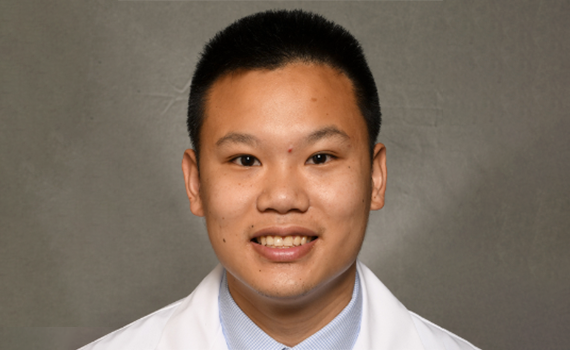 Dr. Alexander Yang, PGY-1by Dr. Alexander Yang, PGY-1
Dr. Alexander Yang, PGY-1by Dr. Alexander Yang, PGY-1
There was a strange quiet in the room as I asked, “Would you like some water?”
The elderly woman with end-stage mitral stenosis looked up, her once bright eyes, now glassy. Each breath, a battle even with the aid of the BiPAP machine. My focus was drawn to her lips as I awaited a response. They had become dry and cracked as the rhythmic jet of air from the BiPAP blew harshly, accompanied by a bellowing roar that shattered the quiet following my question. Unable to overcome the force of the machine, she mustered the strength to nod affirmatively to me. Speech therapy had confirmed days earlier that she could not swallow safely, but our palliative care colleagues suggested liberalization of diet as a comfort measure after long discussions with the patient and family.
As I returned with a small glass of water, I noticed a glimmer of hope on her sister’s face. Perhaps she was happy to see that her sister would be able to wet her parched lips and somehow turn the corner yet. My fingers fumbled around nervously as I quickly realized that I had never removed a BiPAP mask before. Fortunately, two experienced ICU nurses rescued me from my awkward attempt and helped me remove the mask while quickly placing her on high flow oxygen. I remember the sincerity in their voices as they complimented her, “look at you, you look so lovely without that big mask on.”
She weakly smiled back at me before gesturing towards the water. That final sip seemed to last forever, but, as it came to an end, she sighed peacefully and for a moment seemed to find some relief. Almost immediately I noticed she began breathing harder and the blood pressure on the monitor began to fall. “Do you want us to treat this, doctor?” the nurse asked somberly. I bowed in defeat as I shook my head. Within a minute or two, it all came to an end with one final gasp for air. Where there had just been life, now there was no movement at all. The swirling of my emotions seemed to blur the passage of time, until the jarring words of my senior resident pulled me back into the moment: “Time of death 14:30.”
I closed my eyes. What began as weeping from her sister, eventually crescendoed into something much closer to wailing. My eyes began to tear, but the laundry list of other patient care tasks I was already behind on forced my emotions away. I hardened my heart in that moment so that I could force myself to walk out of the room to inform the patient’s son and ask the cold, callous question of whether or not he desired an autopsy.
That was the first time I’d seen death, though there would be many more to come during my first year of internship. I’ve found that as physicians we are sometimes tempted to mask our emotions, to compartmentalize in order to get through the day as I had. In doing so, our patients become nothing more than names on charts, words on screens, and rote lab values we read off on rounds. Dr. Tinsley Harrison told us that this medical Education (E) we have undertaken is the combination of the knowledge we can cram in our head (h) with the much more heavily weighted impact of what our hearts learn along the way (H2): E=hH2.This equation is more than a reminder; it is a prophylactic to help us from becoming jaded by the hard times. Instead, moving forward throughout my residency and my career, I plan to put my heart over my head each day. It is a privilege to walk these hospital floors with all of you and care for these patients in a place with this legacy.